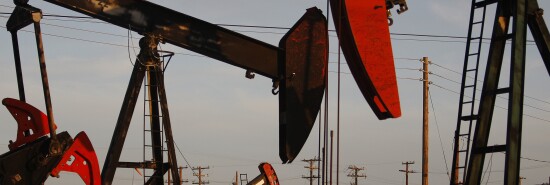
Five years later, evidence of fracking’s safety is stronger than ever
Linnea Lueken and Tim Benson
Video Embed
Five years ago, The Heartland Institute set out to correct some misperceptions about the hydraulic fracturing process (commonly known as “fracking”) that had gained traction in the opinions of a not-insignificant number of people across the country: It pollutes water! And the air! And causes cancer! And birth defects! And asthma! And earthquakes! All at once!
Of course, none of these things, as we’ll show in a bit, are true, but the unscientific stories with their sensationalist headlines written and promoted by anti-fracking activists have done much damage. According to polling, a strong plurality of people in 2023 still oppose this method of extracting oil and natural gas. In a small (but hopefully significant) effort to combat these misperceptions, we have decided to update our 2018 paper with the studies and data that have been published in the past five years subsequent to the original paper’s release. Safe to say, the evidence is still on our side.
Is fracking polluting the water? Short answer, no. Why is that? Because fracking wells are located thousands of feet beneath the Earth’s surface. Water wells and drinking water sources are typically no more than a few hundred feet deep. Despite fear-mongering to the contrary, there is no evidence that seepage of fracking fluids, oil, or natural gas from fracking wells contaminate water sources.
Since 2010, there have been more than two dozen peer-reviewed studies and assessments from experts determining the fracking process is not a systemic threat to groundwater. Some of these come from prestigious research institutions like Yale University, Stanford University, and the Massachusetts Institute of Technology. Others come from nonprofit agencies, and others still come from state and federal agencies.
Most notably, the Obama-era U.S. Environmental Protection Agency (EPA) confirmed these findings in 2016 with its own $29 million, six-year study of the impacts on groundwater located near 110,000 fracked oil and natural gas wells in use across the country. That report concluded, “Hydraulic fracturing operations are unlikely to generate sufficient pressure to drive fluids into shallow drinking water zones.”
What about air quality? Again, studies from across the country reveal that air pollution near fracking operations is typically no danger to human health. These include investigations by health and air quality agencies in Colorado, Utah, and West Virginia, and various university research departments. The EPA reports the decades-long decline in national air pollution has continued unabated since fracking became more widespread.
The same holds for health issues like asthma, birth defects, infant mortality, and cancer. If fracking causes asthma, one would expect asthma to have become more common and severe during the past decade, as fracking has become much more prevalent. This has not occurred. According to the Centers for Disease Control and Prevention (CDC), asthma prevalence rates and the number of asthma sufferers reporting an attack have fallen significantly since 2006.
For example, Pennsylvania, which ranks second nationally in natural gas and total energy production, has the sixteenth-lowest asthma mortality rate, lower than neighboring New York, which banned fracking in 2014. Age-adjusted asthma hospitalization rates in Pennsylvania decreased by 58 percent from 2010 to 2019, and the commonwealth’s six largest shale-producing counties have experienced lower asthma hospitalization rates during the same period, and all six counties have lower rates than the commonwealth average.
In Pennsylvania, the infant mortality rate declined 8.8 percent from 2014 to2021, and decreased more than 26 percent from 2005, when there was no fracking happening in the commonwealth at all. A review of 25 different studies published from 2000 to 2018 from around the country, by the Health Research Institute’s Energy Research Committee, could not find a definitive link between fracking and low birth weights, birth defects, pre-term births, and fetal and infant mortality.
Numerous studies demonstrate there is no evidence that the miniscule amounts of chemicals present in fracking fluids cause cancer, including most recently a four-year, $2.5 million study from the University of Pittsburgh that found “no associations between unconventional natural gas development activities and childhood leukemia, brain and bone cancers, including Ewing’s family of tumors[.]”
Well, fracking is still causing earthquakes, right? Not really. A global database that tracks earthquakes triggered by human activity reveals only 44 earthquakes in the database’s history, which dates back to the nineteenth century, have been caused by fracking. Only nine of these fracking-induced earthquakes occurred in the United States. Just three of the earthquakes in the United States were strong enough to be felt on the surface. Considering there are around 1.2 million active fracking wells in the United States, this number is miniscule.
In light of the immense number of studies showing fracking is relatively safe and provides substantial economic benefits, lawmakers should not ban or place moratoriums or onerous regulations on fracking and drilling activity. No data have emerged since our brief was originally published five years ago to detract from that statement. Of course, this does not mean energy companies shouldn’t continue to develop technologies that make the fracking process safer or more efficient. Nothing in our updated policy brief is meant to suggest there are zero risks associated with fracking or other drilling operations. However, those risks are quite small compared to the enormous benefits fracking continues to provide to the United States.
